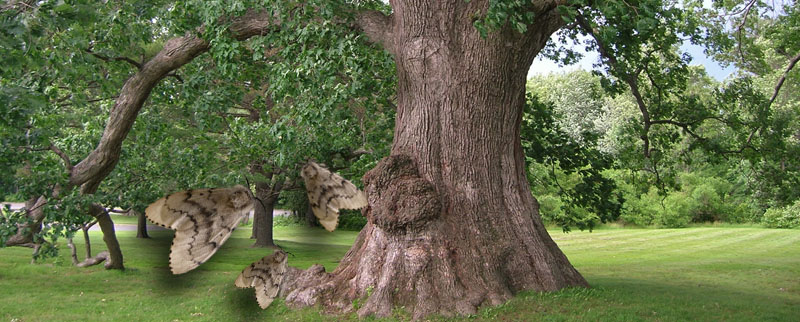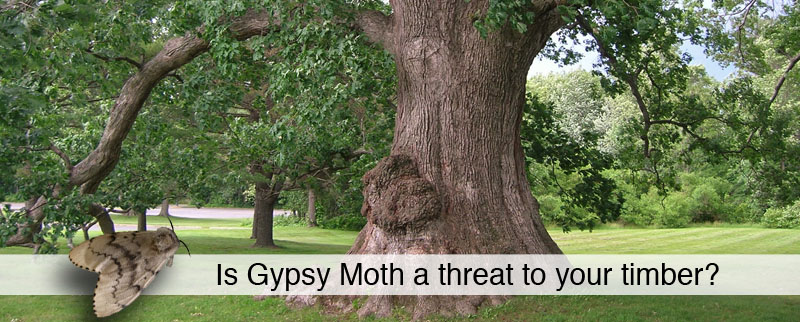The Gypsy Moth attacks timber and poses a serious threat, especially in regions where it’s invasive.. The larvae of this moth destroy the leaves of various hardwood trees, including valuable species like the Northern White Oak. Infected trees rapidly lose their leaves, weaken, and become vulnerable to disease and other pests.
Protecting Your Forest from Gypsy Moth Threats
The Gypsy Moth is an invasive species from Western Europe. It was transplanted into the Boston Area by a French Scientist in 1868. Since its introduction, the Gypsy Moth has marched southward slowly but steadily. In the past decade or two, it has invaded the lush Appalachian Hardwood forest.
The first large scale outbreak of the Gypsy Moth occurred in 1889, but was isolated in scope. By 1990, the moth had established populations throughout the northeastern U.S. It also spread to Ontario and Quebec in Canada. The insect is working its way westward with populations in West Virginia, Michigan and now Ohio.
Eradication efforts are ongoing but so far ineffective at eliminating the threat of this invasive species.
The moth itself is relatively harmless. However, its caterpillar phase can devastate healthy trees. Gypsy Moth caterpillars particularly target Northern White Oaks and Chinkapin White Oaks. They cause rapid decline in host trees. During heavy infestations, falling canopy bits and excrement can sound like rainfall.
Invasive Gypsy Moth Continues Spread: What Ohio Forest Owners Should Know

State and national agencies are working hard to slow its spread. However, the Gypsy Moth is uniquely adapted to travel. Caterpillars create threads that let them glide during winds, moving up to two miles from their birth tree.Attacks Gypsy Moth and Your Timber
The Gypsy Moth is one of the largest threats to North American forests. Experts estimate it causes over $500 million in damage annually to eastern U.S. forests. It’s one of the costliest invasive species in the country.
Management includes pesticides and pheromones to disrupt mating cycles. Efforts to eradicate the pest have been slow and challenging. The moth continues advancing into Ohio. While it prefers oak, its larvae can feed on most Appalachian hardwood species.
Gypsy Moth Infestation and Its Impact on Your Timber
Some of the best Northern White Oak is grown right here in Ohio. Particularly in the Appalachian region of the state, White Oak grows tall and straight and nice.
The valuable Northern White Oak seems to be among the most vulnerable to Gypsy Moth…
Ohio’s White Oak stands are among its most valuable natural resources. They contribute hundreds of millions of dollars annually to the economy. They also support industries like the state’s growing stave industry.
Ohio forest owners should consult professionals. They can learn steps to control the Gypsy Moth’s spread. Preemptively harvesting vulnerable trees is crucial. A single dead tree can lead to dozens within a season or two. This decimates forest vitality and destroys valuable timber.
Contact Timber Works today to discuss Gypsy Moth and the implications it has for your woods.
References
Gypsy Moth Infestation and Its Impact on Your Timber
This destruction reduces the market value of your timber and harms the overall health of your forest. Forest owners must act swiftly, applying preventive measures like pesticides or selective harvesting to protect their investment and preserve their timber.
Gypsy Moth infestations are a growing threat to timber owners, especially in Ohio. The larvae damage trees by eating leaves, weakening them and making them more vulnerable to diseases. Severe infestations can result in the loss of valuable timber, including Northern White Oak.


